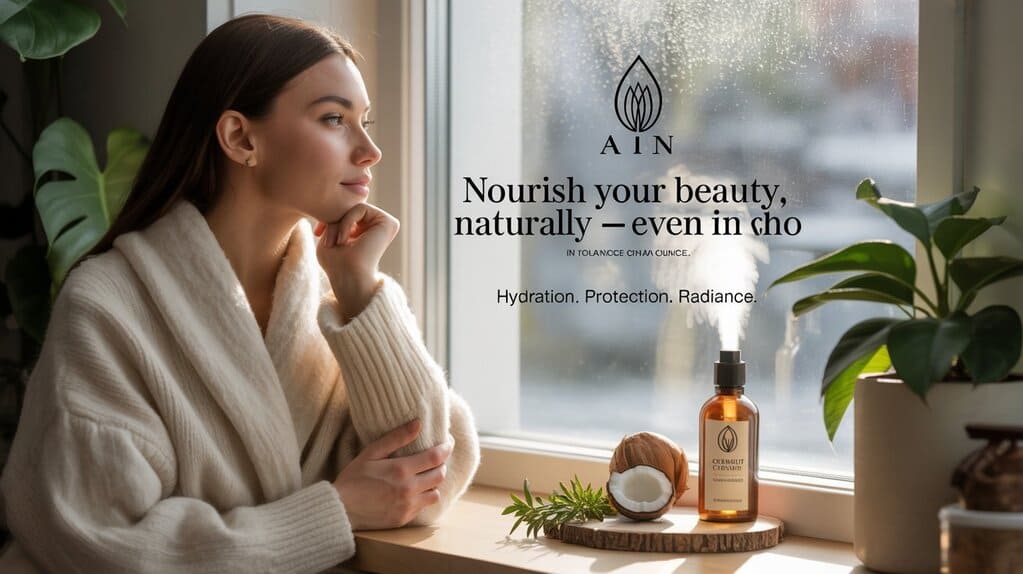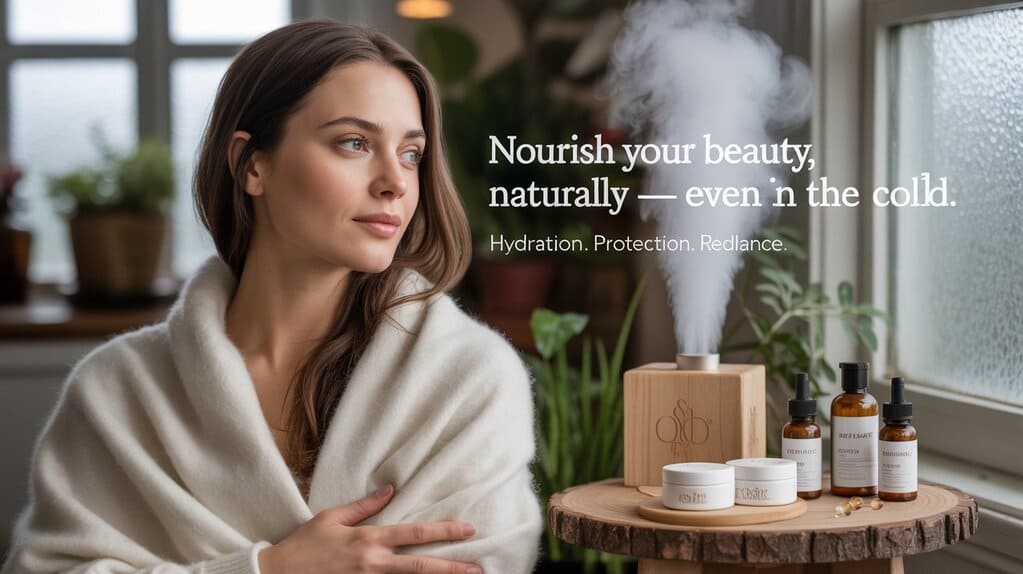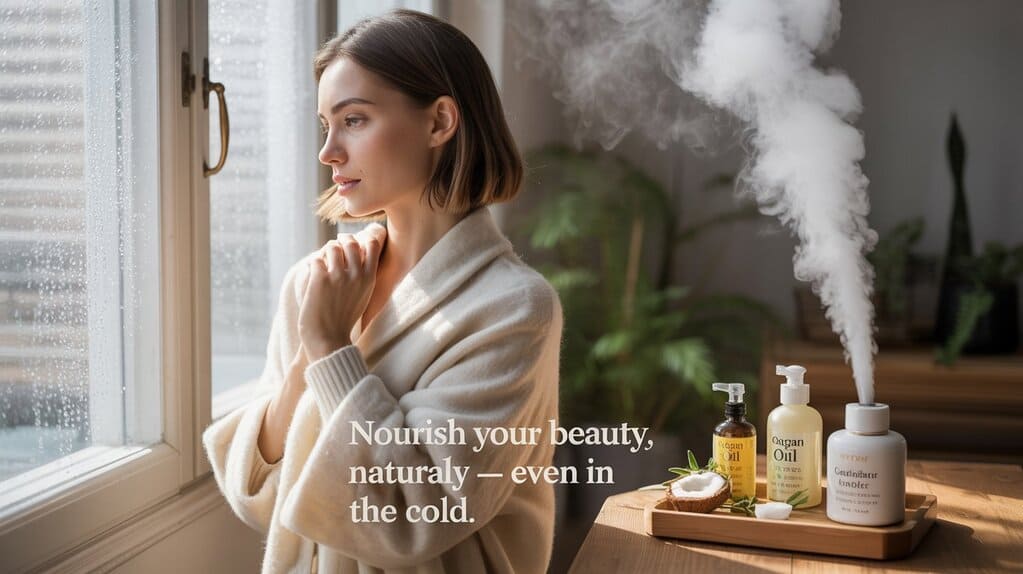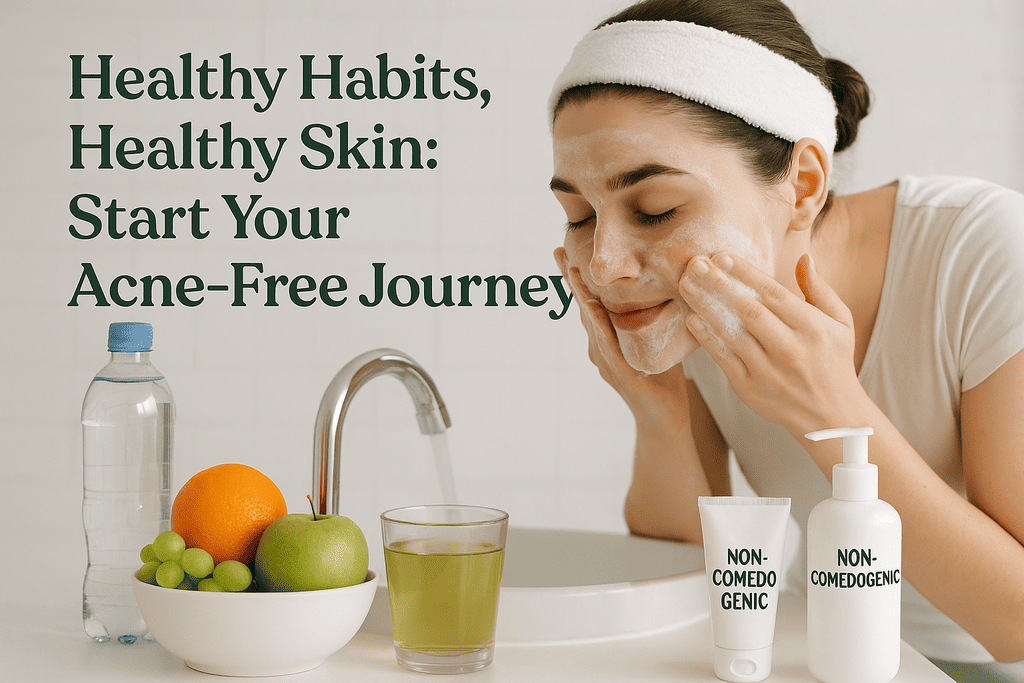
Introduction
Cold weather and low humidity are a double threat to hair and skin. Winter air (and indoor heating) strips moisture from the stratum corneum (the skin’s outer layer) and from the hair shaft, weakening the barrier that keeps the skin hydrated and hair strong. This guide brings together practical, natural beauty tips, grounded in recent dermatological and trichological research from Asia, Europe, and North America, to help you protect your skin and hair through the cold months. Use the SEO-friendly keywords throughout — winter skin care, dry skin treatment, ceramide moisturizer, winter hair care, scalp hydration, natural oils for hair, humidifier benefits, and sunscreen in winter — to help this piece rank and to make it easily translatable and shareable.
Key Points (at a glance)
- Cold, dry air and indoor heating increase transepidermal water loss (TEWL) and lead to winter xerosis (dry skin) and scalp dryness. PMC+1
- Ceramides + humectants + occlusives form an evidence-backed three-part strategy to restore skin barrier function. PMC+1
- For hair: reduce overwashing, use deep-conditioning or oil pre-treatments, avoid excessive heat styling, and protect hair from wind and friction. PMC
- Use humidifiers, gentle cleansers, and targeted scalp care to prevent itchiness, flaking, and breakage. PMC+1
The Science : Why Cold Weather Harms Skin and Hair
Cold outdoor air is often low in relative humidity; indoor heating lowers it even more. This increases the gradient for water movement out of the skin (TEWL) and dries the lipid “mortar” (ceramides, cholesterol, fatty acids) that holds corneocytes together in the stratum corneum, reducing barrier function. Clinical studies and reviews show winter environments can measurably decrease skin hydration and increase dryness symptoms. PMC+1
Hair is non-living once it exits the follicle — damage cannot be biologically repaired. Low humidity causes cuticle lifting, increased friction, static, brittleness, and split ends. Scalp sebaceous activity can decline in cold weather, which reduces the protective oil coating and increases scalp dryness and flaking. Recent trichology reviews outline mechanisms of hair shaft impairment and how environmental stressors (temperature, humidity, UV, mechanical stress) accelerate damage. PMC

Daily Skin Routine for Cold Climates (Natural, Evidence-Aligned)
- Gentle cleansing
- Use a mild, soap-free cleanser once daily (or twice if needed) that preserves the skin’s lipids. Avoid hot water and harsh surfactants that strip oils.
- Repair with ceramides and humectants
- Apply a moisturizer containing ceramides, glycerin or hyaluronic acid to attract and hold water in the stratum corneum. Ceramide-containing formulations are shown to improve barrier function and reduce clinical xerosis. PMC+1
- Seal with an occlusive at night
- After humectants, use a thin layer of an occlusive (e.g., petrolatum, shea butter, or lanolin alternatives) on very dry areas to prevent evaporation. Basic emollient therapy remains a first-line, evidence-supported approach for xerosis. PMC
- Targeted actives
- For rough patches, urea (2–10%) or a low-concentration alpha hydroxy acid (AHA) can improve desquamation and hydration — but use sparingly in winter and follow with moisturizers.
- Sunscreen
- Don’t skip broad-spectrum sunscreen (SPF 30+) — UV still reaches you in winter and can damage both skin and hair proteins.
- Lifestyle
- Use a humidifier to raise indoor RH to ~40–50% (reduces TEWL), drink water, and eat omega-3 rich foods (fish, walnuts) that support skin lipids. PMC+1
Hair & Scalp Care : Routine and Natural Treatments
- Wash less frequently
- Overwashing strips sebum. For many, washing 1–3 times per week preserves natural oils. Use sulfate-free shampoos.
- Pre-shampoo oil treatments and deep conditioning
- Natural oils (argan, coconut, jojoba) can protect hair from mechanical damage and reduce friction during combing. Apply as a 20–60 minute mask before shampoo.
- Limit hot tools
- Reduce heat styling; when used, apply thermal protectants and keep temperatures moderate.
- Gentle detangling and protective clothing
- Wide-tooth combs, satin-lined hats or scarves, and protective hairstyles reduce friction and breakage.
- Scalp care
- If scalp is flaky/itchy: use gentle scalp moisturizers, and for persistent dandruff or seborrheic dermatitis, consult a clinician for antifungal or medicated shampoos. Humidifying the environment and topical emollients often reduce winter scalp symptoms. PMC+1
Natural Ingredients & How They Help (Quick Table)
| Ingredient / Practice | What it does | Natural examples / notes |
|---|---|---|
| Ceramides | Replenish lipid mortar; restore barrier | Topical products with ceramide NP/NS; plant-derived phytoceramides as complements. PMC+1 |
| Humectants | Attract and hold water | Glycerin, hyaluronic acid, sorbitol — layer under occlusives. |
| Occlusives | Seal moisture, reduce TEWL | Petrolatum, shea butter, coconut oil (vegetable occlusives vary in effectiveness). PMC |
| Natural hair oils | Smooth cuticle, reduce friction | Coconut oil (penetrates shaft), argan oil (surface conditioning). PMC |
| Humidifier | Raises indoor RH, lowers TEWL | Target ~40–50% RH in winter. PMC |
| Sunscreen | Prevents UV damage to skin/hair proteins | Broad-spectrum SPF ≥30 year-round. |
(Table above summarizes best-evidence components for winter care — see references.)

Practical Weekly Plan (example)
- Daily: Gentle cleanse (evening/morning as needed) → humectant serum → ceramide-rich moisturizer → sunscreen (morning).
- 2–3× weekly: Deep-conditioning hair mask or oil prewash treatment.
- 1× weekly: Gentle exfoliation for body (avoid aggressive facial scrubs in winter).
- As needed: Spot-treat cracked fingertips and heels with occlusive at night and cotton gloves/socks.
Natural Remedies — Use Wisely
- Aloe vera gel: Soothing, hydrating; apply after sun exposure or minor irritation.
- Honey: Natural humectant and antimicrobial; used in masks (short contact).
- Oatmeal baths: Supportive for generalized dryness and itching (colloidal oatmeal).
Note: Natural doesn’t always mean safe for everyone. Patch-test new ingredients and avoid DIY acidic peels or high-concentration actives without guidance.
When to Seek Professional Help
- If dryness is severe, bleeding, intensely itchy, or accompanied by persistent inflammation — see a dermatologist. Conditions like atopic dermatitis, contact dermatitis, or fungal scalp disease need tailored medical care. Recent clinical reviews recommend emollient therapy as first-line, but persistent disease requires clinician management. PMC
Conclusion
Winter care is fundamentally about protecting and repairing the barrier — for both skin and hair. A simple, consistent regimen that combines gentle cleansing, humectants, ceramide-rich moisturizers, occlusives, and targeted hair treatments will keep dryness, itch, and breakage at bay. Modest lifestyle changes — a humidifier, less heat-styling, protective fabrics, and a nutrient-rich diet — magnify product benefits. The recommendations above synthesize recent dermatological and trichological research from experts across Asia, Europe, and North America to deliver practical, natural, and evidence-aligned tips for thriving in cold climates.
References & Further Reading
- Park EH, et al. Effects of winter indoor environment on the skin. (Korea) — study on winter indoor exposure and skin changes. PMC. PMC
- Nugroho WT, et al. The Efficacy of Moisturisers Containing Ceramide (2023) — evidence on ceramide-containing moisturizers for barrier support. PMC. PMC
- Schild J. The role of ceramides in skin barrier function and … (2024) — review on ceramides and barrier science. Wiley. Wiley Online Library
- He Y, et al. Mechanisms of impairment in hair and scalp induced by … (2023) — trichology review describing hair shaft and scalp responses to chemical and environmental stressors. PMC. PMC
- Vestergaard C, et al. Clinical Benefits of Basic Emollient Therapy for the … (2025) — comprehensive review of emollients and xerosis management. PMC. PMC
- Kundu D, et al. Clinical Measurement of Transepidermal Water Loss (2025) — methodology and humidity/TEWL relationships. PMC. PMC
- Ishikawa J, et al. Dry skin in the winter is related to the ceramide profile… J Cosmet Dermatol (2013) — older but frequently cited work linking ceramide changes to winter dry skin. PubMed. PubMed
- Wikipedia — Stratum corneum (overview of structure and role of ceramides in skin barrier). Wikipédia
- Wikipedia — Hair care (general guidance on hair hygiene and damage). Wikipédia








